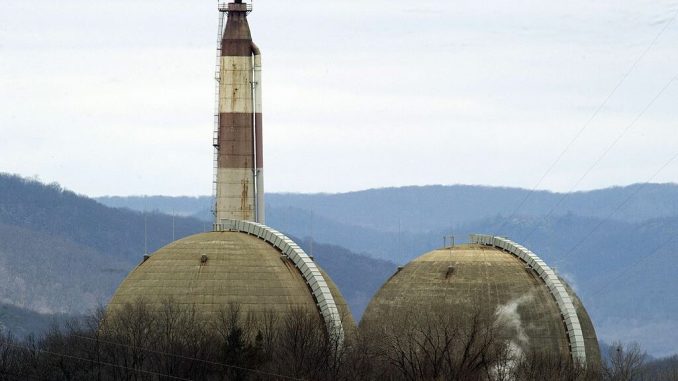

The Indian Point Nuclear Power Plant on the banks of the Hudson River March 22, 2011 in Buchanan, NY. (DON EMMERT/AFP via Getty Images)
OAN Newsroom
UPDATED 5:55 PM PT – Thursday, April 29, 2021
Indian Point Nuclear Power Plant has prepared to cease all activity. The facility, which is located just 25 miles north of New York City, is scheduled to stop producing power on Friday.
The plant’s first reactor came online in the early 1960s and their Unit 2 and Unit 3 reactors commenced production in the mid-1970s. Though the first reactor has long since retired, reactors 2 and 3 had generated about a quarter of the electricity used in New York City and the lower Hudson River area.
“When both units were online at the same time, they generated 2,000 megawatts,” Entergy spokesperson Jerry Nappi said. “That’s roughly about enough power for three-quarters of a million to a million homes each.”
Unit 2 shut down a year ago as part of an agreement to close the plant, however, opponents to the shutdown plan point to the environmental impact and costs, which will result. A 2017 study from “Environmental Progress” estimated the shutdown of Indian Point will cause power sector carbon emissions to skyrocket 29 percent, increasing New York’s dependence on fossil fuels from 44 percent to 56 percent.
Conversely, it would require 1,300 times more land to produce the same amount of electricity Indian Point creates using renewable sources like wind and solar.
Opponents of the plant also point to a potential nuclear disaster as one reason to shutter the facility.
“In this area, we have about 20 million people in the evacuation zone and obviously, you have New York City not far away,” Riverkeeper legal director Richard Webster said. “And so, if we had a nuclear accident for the reactor, there would be 20 million people impacted. If we had a nuclear accident in the spent fuel pool, there could be massively more than that.”
New York Governor Andrew Cuomo (D) even suggested the possibility of a plane being crashed into the facility as a risk. However, experts said the walls of the reactor were designed to withstand a plane crash and the reactor was built partially underground in the bedrock, which provides extra protection.
Overall, proponents of the plant believe the risks of a highly unlikely meltdown are far outweighed by the rewards of cheaper, more efficient energy and are disappointed to see the plant go.





Be the first to comment